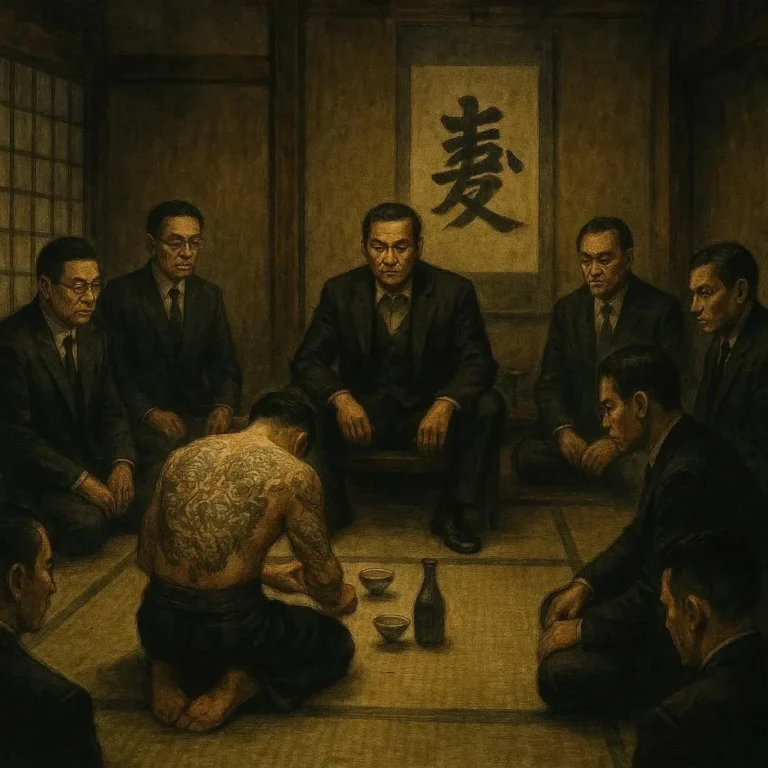509 views Bushido Code: Morality at the Edge of a Blade
The term Bushido—literally the way of the warrior—conjures images of the disciplined swordsman, the stoic samurai, and a moral framework that seems timeless. In an age where honor appears as a relic of a bygone era, the Bushido ethos offers a surprisingly modern map for ethical navigation. This post unpacks the origins, core virtues, and contemporary relevance of this iconic code, showing how a blade’s edge can sharpen the human spirit.
1. The Glimpse into History
Roots in Feudal Japan
Bushido crystallized during the Sengoku (Warring States) period (1467‑1603), when constant conflict demanded clear rules of conduct. Samurai—state‑appointed warrior elites—had to balance fierce loyalty to their feudal lord with personal valor and integrity. Over centuries, a body of texts such as “The Book of Five Rings” by Miyamoto Musashi and the Hagakure (Cave Dweller), compiled in the Edo period (1603‑1868), codified these principles. By the 19th century, Edo society’s stability meant the warrior class became more bureaucratic, embedding Bushido into Japan’s legal and moral fabric.
From Swordsmanship to Soul‑craft
Unlike many ethical systems that arise from philosophy, Bushido’s foundations are tactile: the discipline required to master a katana translates into discipline for the mind and heart. The sensei‑karō—master and mentor—taught that respect for the blade is a reflection of respect for life. Consequently, Bushido was never merely a code but a lived practice that permeated education, literature, and daily ritual.
2. The Core Virtues – Five Pillars of the Samurai
| Virtue | Modern Equivalent | How the Samurai Practiced It |
|——–|——————-|—————————–|
| Rectitude (Gi) | Moral integrity | Decisive action in battle, even when personal risk is high |
| Courage (Yu) | Boldness | Facing overwhelming odds without fear |
| Benevolence (Jin) | Compassion | Protecting the weak, mercy to defeated opponents |
| Respect (Rei) | Politeness | Formal address, respecting elders and adversaries |
| Honesty (Makoto) | Sincerity | Transparent decision‑making, admitting mistakes |
| Self‑Discipline (Chisei) | Self‑control | Rigorous training, diet, and mental austerity |
| Moral Courage (Shin) | Integrity under pressure | Upholding vows, resisting corrupt demands |
Rectitude: In the battlefield’s chaos, the samurai’s sense of justice guided judgment. A commander who chose to release wounded foes exemplified Montre’s boon of mercy.
Courage: True bravery transcends physical prowess; it is the willingness to act on one’s convictions.
Benevolence: Because a warrior’s armor could double as a shield for civilians, benevolence was expected as a moral safeguard.
Respect: Samurai culture reinforced a hierarchical respect system that cultivated social cohesion.
Honesty: The confession of a fault—publicly, after a failed duel—signaled true honor.
Self‑Discipline: Early rise, regimented exercise, and strict diet—self‑control expressed through daily practice.
Psychological Resonance
The emotional labor required to live by these tenets—especially with field death looming—created a tightly knit identity. Researchers studying dual process theory find the samurai’s moral decisions hinge on a rapid intuitive judgment, followed by deliberate reflection, a pattern mirrored in their training regimens.
3. Bushido’s Continued Cultural Influence
In Media and Entertainment
From Miyazaki’s Princess Mononoke to the Mortal Kombat franchise, samurai imagery remains a staple. Even Western narratives—the stoic vigilante in law‑and‑order dramas—draw on Bushido’s tumultuous ideals. When Oldboy (2003) revised the samurai’s revenge story for a modern audience, it underscored how the code’s essence adapts.
In Business and Leadership
Corporate Japan’s emphasis on kaizen (continuous improvement) and wa (harmony) intimately links to Bushido ethics. Global leaders study it to cultivate principled leadership and resilience. For instance, John Legere of T-Mobile referenced the “balance of loyalty to customers and personal integrity”—a nod to Bushido’s principles.
4. Why the Code Endures – A Psychological Analysis
Cognitive Dissonance shows that humans seek consistency between beliefs and actions. Bushido offers a coherent moral framework that resolves internal conflict by aligning actions with a set of virtues. Its focus on self‑discipline, harmony, and courage acts as a tool for managing anxiety in uncertainty—something modern professionals can appreciate amid workplace volatility.
Additionally, the Samurai’s emphasis on martial identity provides a sense of belonging. Similar to communities in modern sports or religion, the alignment fosters a collective purpose—proxy for the Earthly sense of belonging humans crave.
5. Practical Lessons You Can Apply Today
1. Adopt a “Rectitude” Mindset
Set a rule: Never act beyond what you can morally justify. In business negotiations, this means refusing unethical shortcuts, just as a samurai shuns dishonored tactics.
2. Cultivate Physical and Mental Courage
Practice public speaking or impromptu presentations. Overcoming the fear of judgment builds resilience, mirroring the samurai’s embrace of risk.
3. Practice Benevolence Daily
Volunteer a few hours a month or simply listen to a colleague’s concerns. This outward kindness reinforces inward integrity.
4. Honor Respect in Digital Spaces
Avoid toxic language. Respond politely—even when disagreeing—mirroring Samurai etiquette where even rivals were met with courtesy.
5. Embrace Honesty in Self‑Reflection
Keep a journal of decisions. Review successes and failures openly; both are instructive, much as a warrior reviews a failed duel.
6. Follow Self‑Discipline Underground
Set structured routines: early wake‑ups, planned meals, workouts. Consistency is a hallmark of the Bushido path.
7. Navigate Moral Courage in Crisis
When pressure mounts to cut corners, remember the Koshiki principle: principles precede profit. Stand firm, even if it puts others at a disadvantage.
6. Conclusion – The Blade’s Edge as a Modern Compass
The Bushido code may have been forged on a battlefield, but its very marrow is still relevant. Whether you’re a business executive, student, or creative, the samurai’s ethos offers tools for integrity, courage, and compassion. Embracing Bushido doesn’t translate to sword‑wielding; it means walking with a moral compass that can lead you through any modern conflict.
The blade’s edge, once a literal threat, now becomes a metaphor for the truthful, disciplined, and honour‑bearing path we all can take—whether in the office or in the quiet moments at home.







